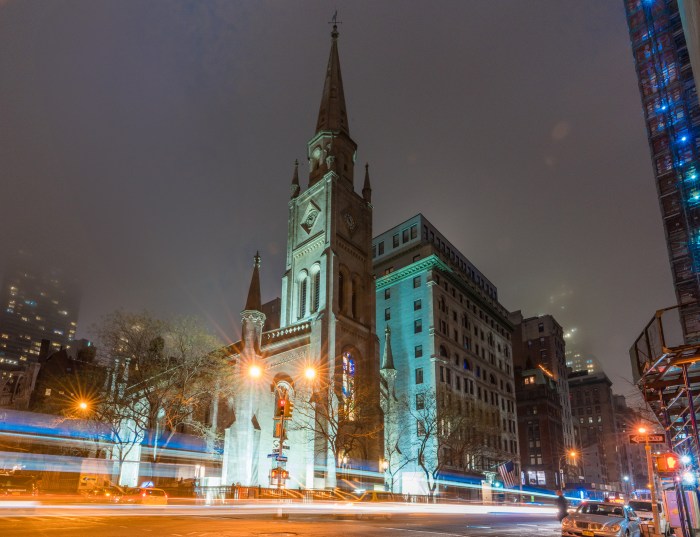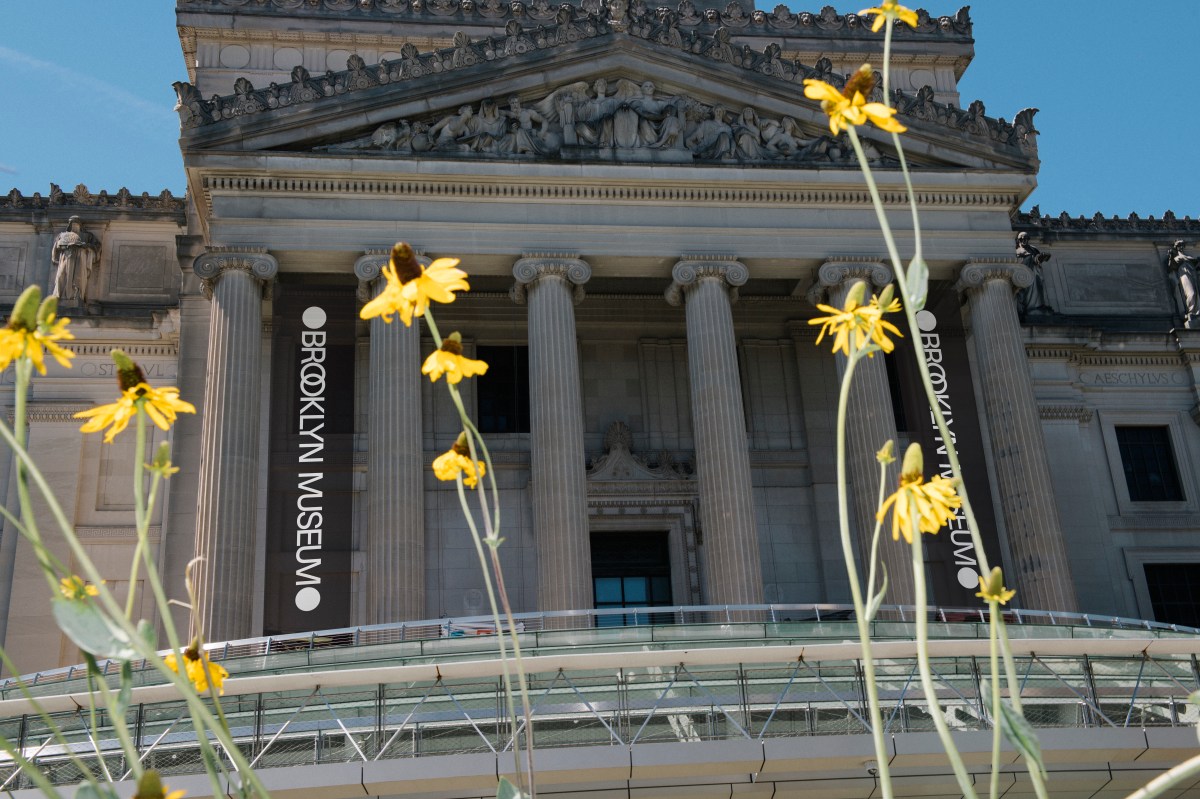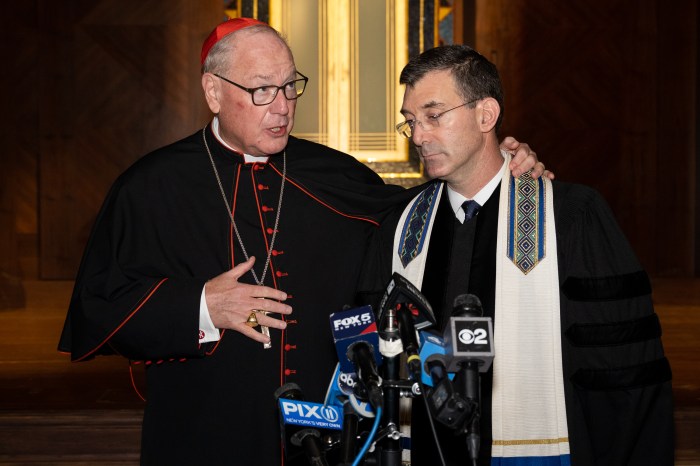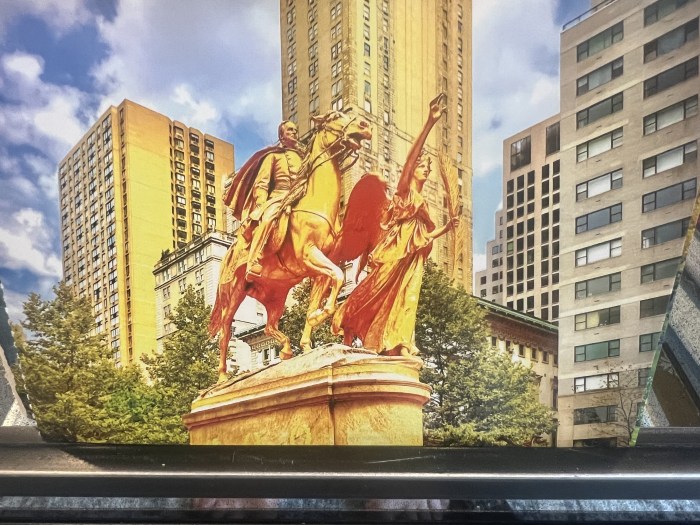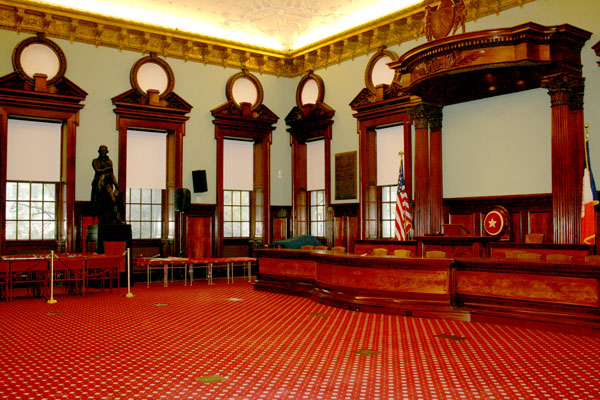 [/media-credit]
[/media-credit]
The $123.8 million project, undertaken by the city Department of Design and Construction, entails a makeover of the politicians’ offices and meeting rooms — some of which were crumbling before the eyes of City Council Speaker Christine Quinn and other city councilmembers.
“Generally, I think it’s good to work in a place where the ceiling isn’t going to fall on your head,” said Quinn, recalling a vivid memory of water rushing into the City Council’s chamber during a health committee meeting in the early 2000s.
Quinn pointed out the chamber’s squeaky clean mahogany wood panels and said that the room was a “mess” prior to the renovations.
“Apparently, if you polish wood, it looks better. It’s a revelation to all of us in city government,” said Quinn facetiously.
Reverting to a more serious tone, Quinn, who briefed journalists on the renovations during a Dec. 8 City Council press conference, reported that the Council is close to fully operational in its newly refurbished wing. The Council’s regularly scheduled meetings and hearings had been temporarily moved to the Emigrant Savings Bank across the street while the chamber was undergoing repair. City Councilmembers began moving back into their City Hall quarters in mid-November, according to the D.D.C. Renovations will be fully completed by July 2012.
“The place looks great. It’s great to be back,” said Quinn.
Apart from making basic structural reparations to City Hall, which had been damaged by fires and incurred basic wear and tear, the D.D.C. upgraded the building’s elevator and ventilation systems. The construction crew dug into bedrock to create a subbasement for the building’s mechanical equipment; and installed sprinklers, smoke detectors and other safety devices throughout the building, in addition to making it handicap-accessible.
“The elevator did not [previously] go to the third floor, where the city Design Commission is — which is a public entity [that provides] access to materials,” said Louise Levi, construction manager for the D.D.C. who has been supervising the project.
The new subbasement will also house the infamous “Room 9,” which is dedicated to members of the press. The new, cavern-like space, which will open in late January, is “evocative of a cigar bar, if those are still allowed in the city,” joked Quinn.
Major, building-wide modifications to City Hall hadn’t been made since the 1950s, according to Levi. Certain internal fixes made in the last century ended up posing greater structural problems than previously existed, she noted.
“The goal was, it being a historic, landmarked building, to upgrade the environmental efficiency and the mechanical units… and doing it in a way that somehow honors that history,” said Levi. “The main joke I make to my friends is, this is kind of like the oldest squatter building in New York history. It has had a different administration every single four-to-eight years, and nobody’s really taken care of it. We’re just trying to take this 200-year-old historic shell and bring it as much up to code as possible.”
While chandeliers in the Council’s first-floor lounge were upgraded with compact fluorescent lights, artwork in this and other City Hall rooms was refurbished — most notably, painter Tabor Sears’ “New York Receiving the Tributes of the Nations,” a 1903 oval mural that crowns the ceiling of the chamber room. The room’s towering statue of Thomas Jefferson, an original plaster sketch model of French sculptor Pierre Jean David D’Angers’ 1833 bronze statue, was also restored.
“We got Jefferson a new quill; before, his thumb was held on by a piece of wire,” said Levi.
The chamber’s walls were repainted green, its grand balcony was repaired, and the room’s weathered curtains, which had been used as a backdrop in the 1996 film, “City Hall,” starring Al Pacino, were replaced with temporary shades.
“[The curtains] looked like a cat had been left in them — they were shredded into bits and held back by [binder] clips,” remarked Quinn.
“Holy cow, it looks amazing in here!” exclaimed District 5 Councilmember Jessica Lappin as she strode into the adjacent Committee Room for the first time last week.
“It’s beautiful. The whole room just lights up,” remarked Councilmember Margaret Chin as she stepped into the chamber minutes before a stated meeting.
While the Emigrant Savings Bank worked as an interim meeting location, Chin said, “there’s no substitute for [City Hall].”







